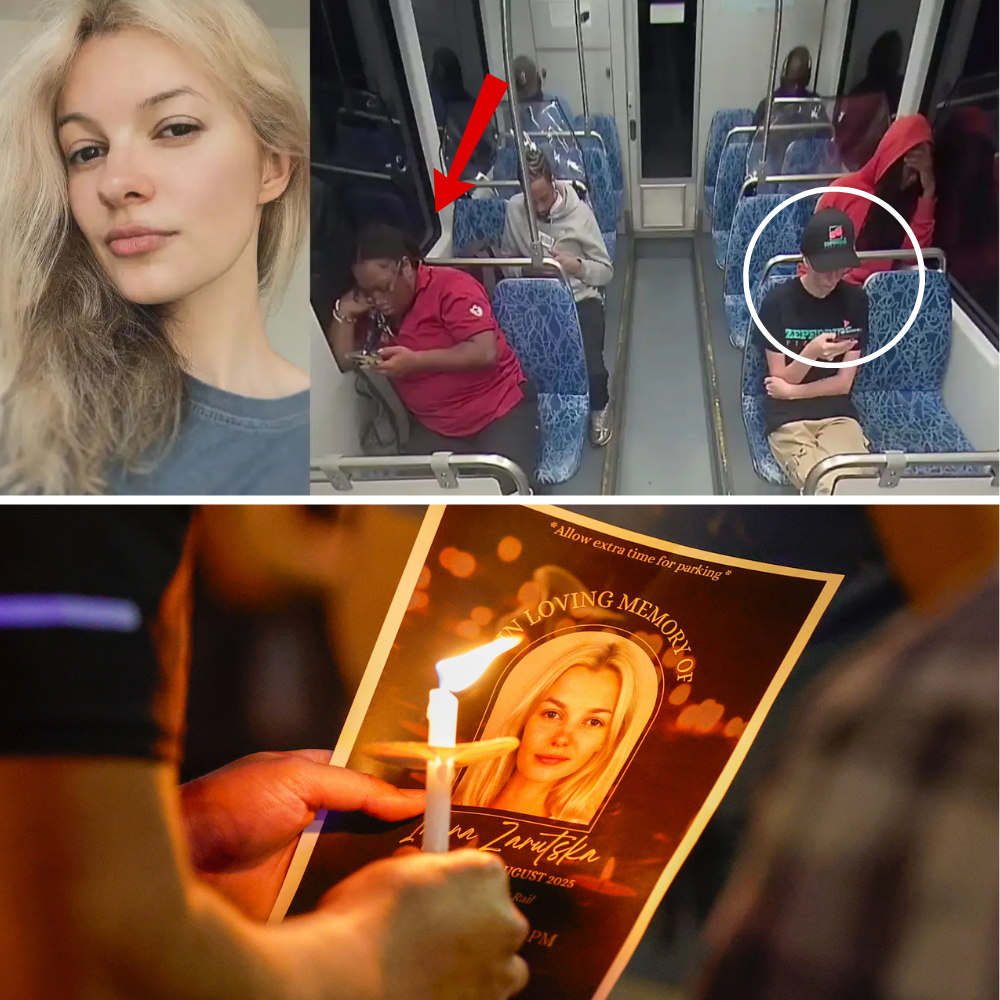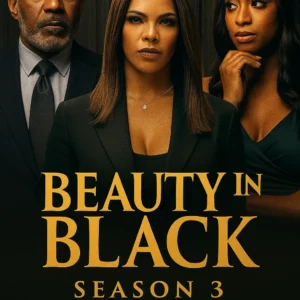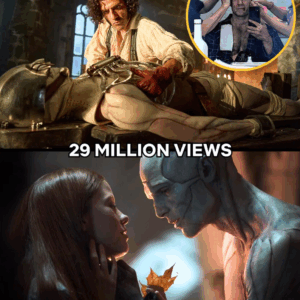
In the dim, flickering lights of a late-night train rumbling through Charlotte, North Carolina, 23-year-old Iryna Zarutska—a vibrant Ukrainian refugee who had escaped the horrors of war only to chase the American Dream—faced her final, unimaginable terror. On August 22, 2025, as the Lynx Blue Line glided toward the East/West Boulevard station, Zarutska boarded after a long shift at her pizzeria job, her khaki pants and dark shirt blending into the weary crowd of commuters. She settled into a seat, perhaps daydreaming of her art classes at Rowan-Cabarrus Community College or the veterinary assistant career she dreamed of, surrounded by the animals she adored. But in a blur of senseless violence, 34-year-old Decarlos Brown, a homeless man grappling with untreated mental health issues and a trail of prior arrests, lunged from behind. With a concealed pocketknife, he plunged the blade into her neck and back three times—unprovoked, inexplicable, final.
Surveillance footage, later leaked and viral across social media, captured not just the brutality of the attack but the gut-wrenching aftermath that has ignited a firestorm of outrage and soul-searching. As blood poured from her wounds, Zarutska staggered to her feet, her eyes wide with shock and confusion. She turned to the passengers around her—fellow riders mere feet away—and in her accented English, born of just three years in the U.S., gasped for help. Her hands clutched at her throat, her body swaying as life ebbed away. Yet, in those critical seconds, no one moved. No shouts pierced the air. No hands reached out to staunch the flow or summon aid. The car, populated by at least a dozen souls, remained frozen in a collective paralysis. Brown, injured in the scuffle by Zarutska’s instinctive fight-back, fled the scene, but not before the damage was done. Paramedics arrived too late; Iryna Zarutska, the Kyiv-born artist with a degree in restoration and a heart full of generosity, bled out on the platform she would never leave alive.
The world, it seems, has fixated on the raw agony of her family’s loss—a grief compounded by the fact that her father, trapped in Ukraine by martial laws barring men of fighting age from fleeing, couldn’t even attend her funeral. Her mother, sister, and brother, who had huddled with her in bomb shelters before their 2022 exodus, now grapple with a void that echoes the invasions they fled. Tributes pour in: her radiant smile while walking neighbors’ pets, the custom artworks she gifted freely, the unyielding optimism that turned a Huntersville basement into a home. Ukrainian communities worldwide mourn a daughter of their nation, her death a cruel irony in a land promised as sanctuary. But amid the tears and hashtags, a vital question lingers unspoken, buried under layers of sympathy: Who is to blame? Not just the knife-wielding assailant, now charged with first-degree murder and facing federal scrutiny, but the invisible architects of inaction—the bystanders whose indifference sealed her fate.
This wasn’t an isolated glitch in human decency; it’s a symptom of the “bystander effect,” that chilling psychological phenomenon where the presence of others diffuses responsibility, turning potential saviors into spectators. Zarutska’s case evokes the ghosts of tragedies past, like the 1964 stabbing of Kitty Genovese in New York, where 38 witnesses heard her screams yet did nothing, birthing the term itself. Decades of studies—from Darley and Latané’s seminal experiments to real-world analyses of subway assaults—confirm it: the more eyes on a crisis, the less likely anyone acts, each assuming “someone else will.” On that Charlotte train, fear of reprisal, urban desensitization, or sheer shock may have played roles, but the result was the same—a young woman’s life forfeit to apathy. If just one rider had lunged forward, pressed an alarm, or applied pressure to her wounds, medical experts say survival odds could have doubled in those golden first minutes. Brown’s history of mental health struggles and petty crimes underscores systemic failures too: underfunded transit security, lax fare enforcement that allows volatile individuals unchecked access, and a fractured mental health safety net that releases the unstable into public spaces without safeguards.
Zarutska’s story has transcended local headlines, thrusting Charlotte’s transit woes into the national spotlight. Mayor Vi Lyles issued a somber statement vowing reviews of Lynx Blue Line protocols, while policymakers from both parties seize on it—Democrats decrying gaps in social services, Republicans railing against “soft-on-crime” urban policies in Democratic strongholds. Elon Musk tweeted condolences laced with pointed critiques of public safety, and even President Trump’s administration has cited it in pushes for federal interventions in high-crime cities. Yet, beyond the partisan noise, this demands a reckoning: How many more Irynas must fall before we confront the culture of disengagement? Public transit, meant as veins of connection in our sprawling metropolises, has become arteries of isolation, where riders scroll phones amid mounting threats—rising assaults on U.S. rails up 20% since 2020, per federal data.
At its heart, Zarutska’s death isn’t merely a statistic; it’s a clarion call for accountability. Families like hers, refugees rebuilding from rubble, deserve more than platitudes—they need enforced training for transit staff on crisis intervention, mandatory bystander education in schools and workplaces, and investments in mental health outreach that prevent predators like Brown from spiraling unchecked. Her uncle, in a heartfelt interview, urged remembrance not of her “ugly death” but her “beautiful life”—the laughter, the ambition, the unscarred hope. Yet, to honor that, we must ask the uncomfortable: Whose hands stayed idle? Whose policies enabled the void? In a nation drowning in division, Iryna Zarutska’s blood stains us all, demanding we rise—not with indifference, but with the fierce responsibility that could have saved her. Only then can her dream endure, unextinguished by the silence that claimed it.




